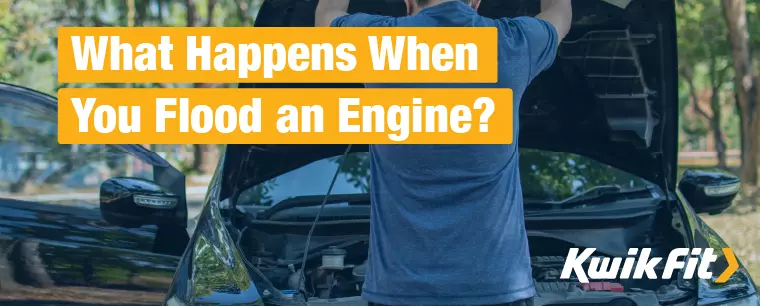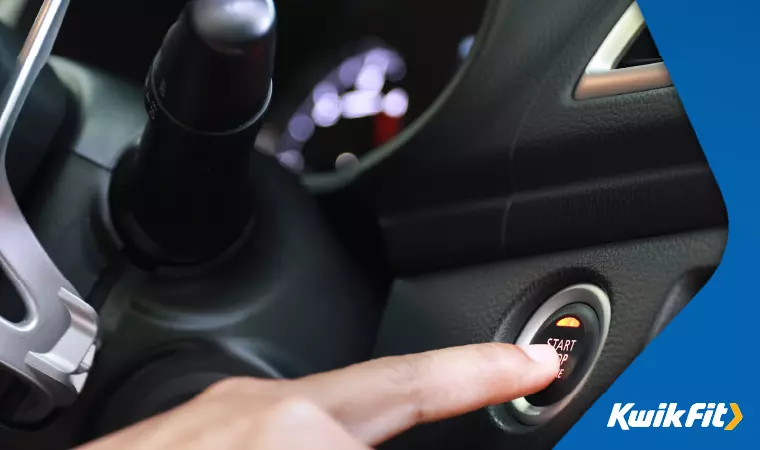What Happens When You Flood an Engine?
Jack Dreyer | Tuesday 23rd May 2023 8:00am

A flooded engine is a great way to ruin the start to a day. It can leave you stuck at home or elsewhere, waiting for recovery. Life and errands, of course, wonít wait for you Ė so what is a flooded engine, why does it happen, and what can you do to fix it?
Letís find out!
What is a flooded engine?
When we refer to a ďflooded engineĒ, we mean specifically an engine thatís been flooded with fuel and not one thatís been flooded with water. A water-flooded engine is a much more serious problem that usually requires the engine to be partly dismantled to address.
Youíd think that an engine canít be flooded with fuel, right? It should just burn off! But thatís the key: when thereís too much fuel, thereís no room for air, so the spark plugs canít ignite the fuel and get the engine going.
This tends to happen more often with older vehicles, and specifically older diesel vehicles because of two reasons:
- Older vehicles didnít have as sophisticated fuel management systems as those now found in modern vehicles.
- Diesel fuel needs to be warmed before itís easily flammable, so it can more easily smother glow plugs.
Signs of a flooded engine
Flooding the engine with fuel creates some telltale signs:
- A strong smell of fuel, for both diesel and petrol engines
- Car not starting
- Smoke from exhaust (caused by improperly burning fuel)
What causes an engine to flood?
An engine is most usually flooded for a few (similar) reasons. The most common cause of flooding is when a car is cold-started in low-temperature weather. The low ambient temperature can result in the fuel not igniting properly, which then compounds when more fuel is added by the fuel pump. This is similar to the next cause of flooding: when a car is turned on and moved a short distance before being turned off.
The process of turning the car on pumps lots of fuel into the engine to get it going, and pressing the accelerator pedal down to move the car in 1st gear adds even more fuel. So, when the carís turned off again, not all the fuel gets burned and instead collects in the cylinders.
The last common reason is a problem with your spark plugs Ė if theyíre not burning the fuel properly then fuel can build up until it smothers them. Having said that, the culprit might instead be a faulty starter motor or flat battery that leads you to repeatedly attempt to start the car.
As such, we tend to see engines flooded most often during spring, autumn, and winter, when the cold weather means that engines need longer to heat up.
How to fix a flooded engine

There are two main ways to try fixing a flooded engine, and these depend on the exact cause and the type of engine you have.
Method 1
The easiest way (unfortunately) only works for petrol cars. Simply open the carís bonnet and wait for ten minutes or so before trying again. In usual ambient temperatures, petrol will evaporate Ė so enough should have evaporated to make room for air after a few minutes.
When you try to start the car back up, donít press the accelerator pedal at all so that you arenít adding any more fuel to the cylinders.
Method 2
Failing the first method, you can try to open the air-line into the engine before trying to start. Before you try this, make sure youíre in an area with adequate ventilation Ė for example, if your carís in a garage, be sure to open the door Ė and put your handbrake on.
The best way to open the air-line is to press the accelerator pedal down all the way and hold it there without pumping. If you pump then youíll add more fuel but pressing it down all the way and holding only adds a bit of fuel. Wait for 30 seconds or so before turning the ignition Ė again keeping your foot all the way down on the accelerator.
An important note here is that this can cause a lot of smoke to come out of the exhaust as improperly-burned fuel makes its way through the exhaust line. Regardless, keep turning the ignition for up to 10 seconds at a time, with short breaks in between, until the engine starts. Once started, you need to warm the engine up to get all the fuel out.
Let it idle and rev slightly for a few minutes to warm it up Ė then youíre good to go!
If this hasnít worked, then you may need to call for recovery assistance.
Persistent starting problems?
If your engine has persistent problems with starting, your car may have a deeper issue like blocked injectors or broken spark/glow plugs. Book your car for an appointment at your local Kwik Fit centre Ė where our expert technicians will be able to diagnose and fix the problem in no time!
Any facts, figures and prices shown in our blog articles are correct at time of publication.
Featured Articles
Is it Illegal to Drive With One Headlight?
Saturday 19th July 2025
Wondering if itís illegal to drive with one headlight? Learn about the safety risks and penalties of illegal blown bulbs and why you should fix them promptly.
Air Con in EVs & Hybrids: Experts Answer Your Questions
Monday 30th June 2025
Does air con drain EV batteries? Can you use the air con while charging an electric car? Find out the answers to these questions & more from Kwik Fitís experts.
Why Is Your Car Making a Noise? Fixes & Tips
Friday 13th June 2025
When your car starts making unexpected noises, it can certainly be quite disconcerting; it may be nothing to worry about, but hereís what you need to know.









